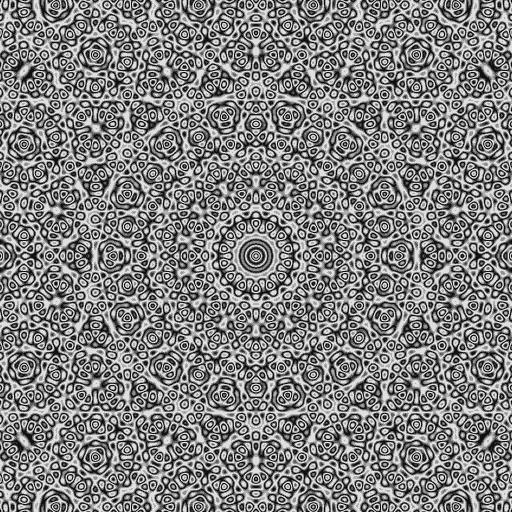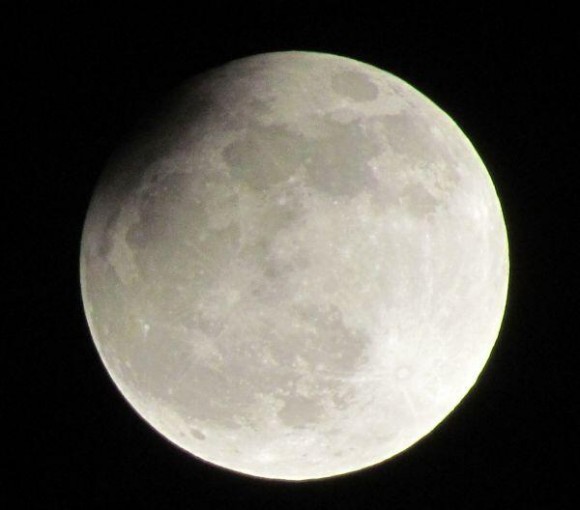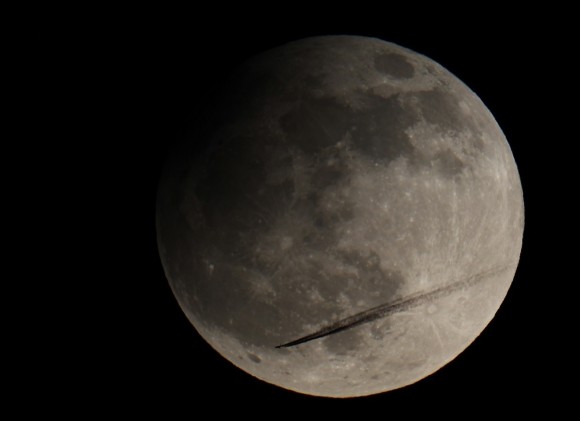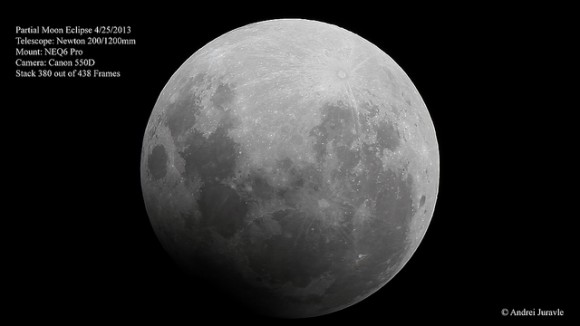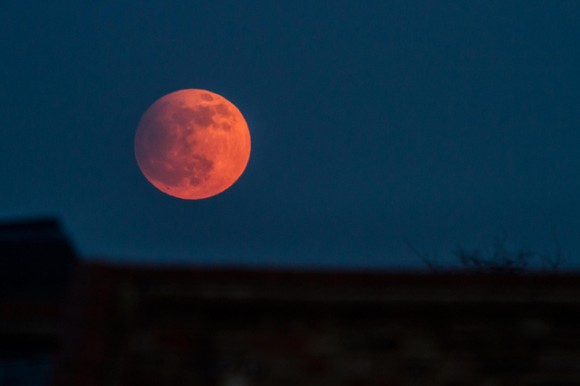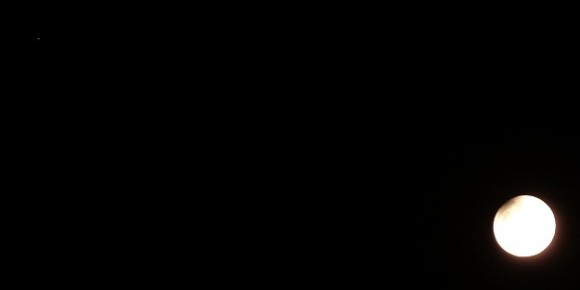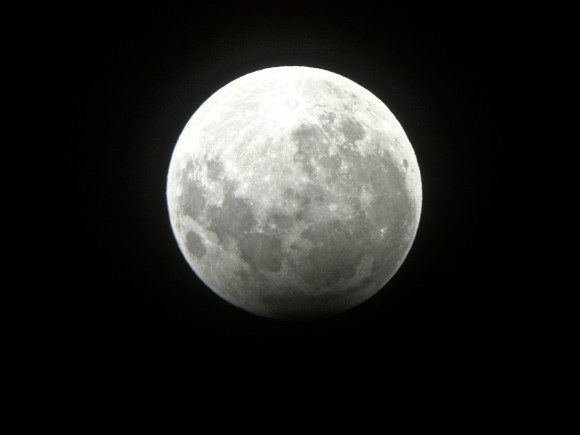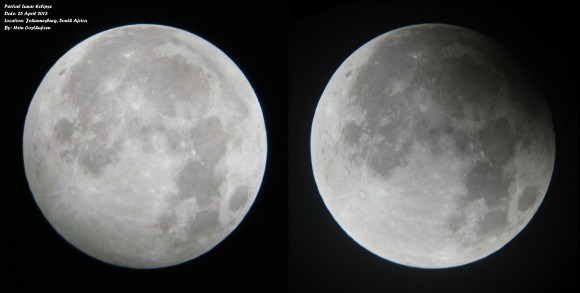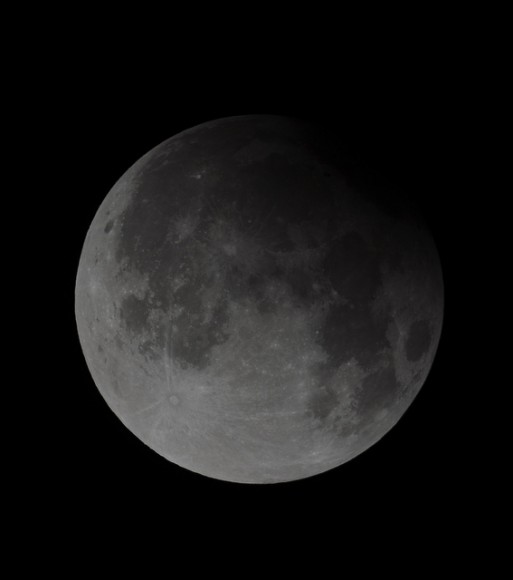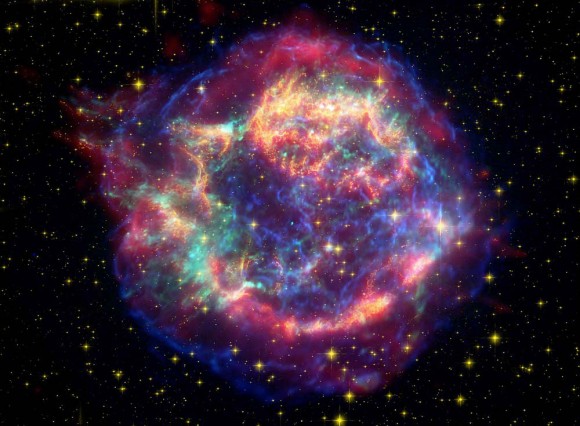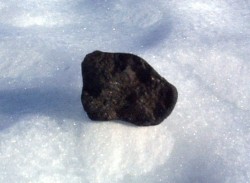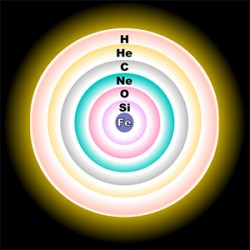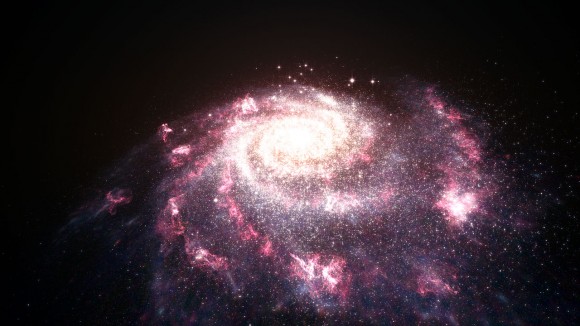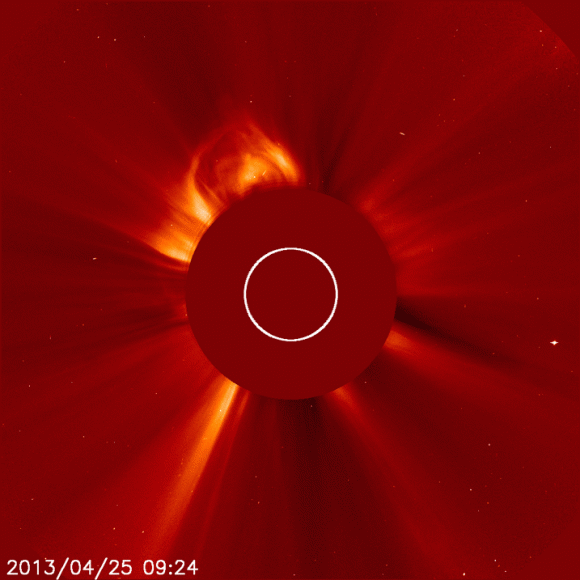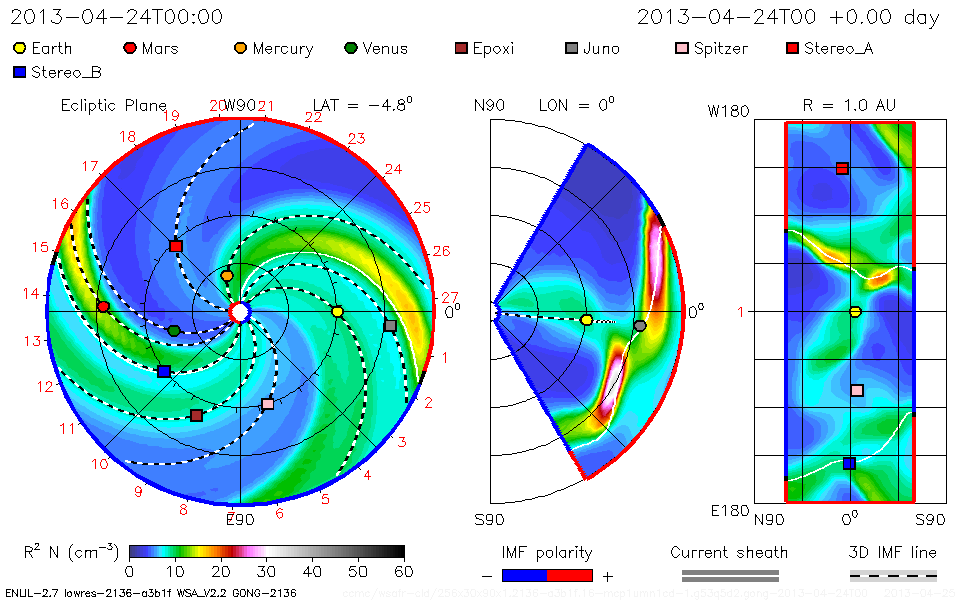_________________
Betelgeuse Blows Out a Monstrous Arc of Gas Nearly As Big As Our Solar System | Phil Plait
Bad Astronomy | Thursday, April 25, 2013, at 8:00 AM

^ Betelgeuse! Betelgeuse! Betelgeuse! Photo: University of Manchester
- The famous star, marking the shoulder of Orion, is a red supergiant, a massive and massively swollen star. It’s ridiculously huge; if you replaced the Sun with Betelgeuse it would stretch out nearly to the orbit of Jupiter.
It’s also near the end of its life. Someday, probably within the next million years or so, it’ll explode, becoming a supernova, and shining about as bright as the moon in our sky. Mind you, it’s 640 light years—6.4 quadrillion kilometers—away. So yeah, it’s quite the behemoth. It’s so big that sophisticated techniques can resolve details on Betelgeuse, even from that mind-crushing distance.
And new observations of it show that it’s weirder than previously thought. Using the new e-MERLIN radio telescope array in England, astronomers have zoomed way in on the star, showing some details on and around Betelgeuse. The image above is the result, and several things leap to the eye.
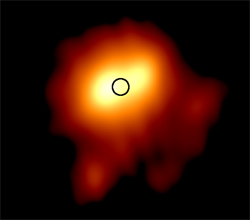
^ Not a brain slug. Photo:
University of ManchesterFor one, the outer atmosphere (which is where the radio waves from the star originate) stretches out a full five times larger than the star’s surface in visible light. The image inset here shows the visible disk of Betelgeuse outlined compared to the star’s outer atmosphere (red supergiants don’t have a surface per se, they just kinda peter out with distance, like the Earth’s atmosphere). For another, there are two hot spots of unknown origin in the atmosphere. They may be regions where convection has brought up hotter material from deep within the star, or it could be they’re where the outer atmosphere is thinner, allowing us to peer deeper inside, where it’s hotter.
But it’s that arc of material to the lower right that makes the hair on the back of my neck stand up. Seriously, that looping bridge is huge, vast, monstrous. It’s an enormous arch of gas, erupted from the star itself, and it contains 2/3 as much mass as the Earth. And the size: It towers 7 billion kilometers (4 billion miles) over the star!
That’s almost the size of Neptune’s orbit. Not Neptune itself, its orbit. That arc of gas casually tossed out by Betelgeuse is on the same size scale as our solar system.
 < Driving the point home: Betelgeuse with the orbits of the outer planets on it (from the inside out): Jupiter, Saturn, Uranus, and Neptune. Photo: University of Manchester
< Driving the point home: Betelgeuse with the orbits of the outer planets on it (from the inside out): Jupiter, Saturn, Uranus, and Neptune. Photo: University of ManchesterOn top of all that, we’re not really sure how it formed. Clearly, Betelgeuse is blowing off its outer layers, and there are structures in that wind that may form as it interacts with previously ejected material, or the material that floats between the stars. This arc may be something like that (though at 150K, or -120°C, that seems unlikely to me; the gas would be warmer if it were slamming into other material and getting compressed), or it may be a single structure like a gigantic solar prominence.
Taking images on this sort of scale is relatively new; the technology needed is fierce. The data feeds from several telescopes have to be combined in exquisite detail and with incredible accuracy for this to work. This technique is called interferometry, and it’s been used on Betelgeuse before. e-MERLIN is a big upgrade to the previously existing system, and along with other interferometers around the world, is helping us understand Betelgeuse better. Stars like it are critical to the galactic ecosystem; they blast out winds of material before exploding, and then upon their deaths seed the space around them for many light years with heavier elements; the basic constituents of planets, moons, you, and me.
Knowing them is literally knowing ourselves. Not a bad target for our attention.





